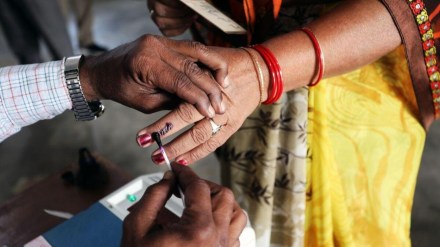A quiet revolution unfolded in India’s 2024 Lok Sabha elections, driven not by fiery rallies or political slogans but by the transformative power of welfare schemes for women. Literacy programs, housing initiatives, sanitation drives and Mudra loans became the unlikely architects of change, bringing 1.8 crore additional women to the ballot box and reshaping the nation’s democratic landscape in ways that can no longer be ignored.
According to a latest SBI study, based on data from the Election Commission of India, showed how programs promoting literacy, sanitation, Mudra loans and housing ownership empowered women to engage more in the electoral process. A 1% rise in literacy alone contributed 45 lakh more women voters, while house ownership under the Pradhan Mantri Awas Yojana (PMAY) accounted for an additional 20 lakh voters.
The SBI report found that 19 states implementing women-centric welfare schemes saw an average increase of 7.8 lakh women voters each, totaling 1.5 crore additional participants. In contrast, states without these initiatives registered a modest rise of 2.5 lakh women voters on average.
Sanitation schemes contributed to 21 lakh new female voters, while access to electricity and improved drinking water also played a role, albeit less statistically significant.
“We empirically establish that states with women-focused welfare programs have witnessed a remarkable incremental turnout of 18 million female voters,” the report noted. These schemes, including income transfers, literacy drives, employment opportunities like the Mudra Yojana and house ownership under PMAY, were pivotal.
The Pradhan Mantri Aawas Yojana (PMAY), with 74% of houses being registered under women’s names — either solely or jointly — proved transformative. Secure housing gave women not just shelter but also a sense of identity and agency, translating into higher electoral participation, the report found.
Literacy initiatives demonstrated an even broader impact, with a 1% increase in literacy rates correlating to a 25% rise in female voter turnout.
Caution and future recommendations
While celebrating these successes, the SBI Research report cautioned against excessive welfare spending, suggesting it should not exceed 1% of a state’s Gross State Domestic Product (GSDP). Additionally, the report urged the Election Commission to explore comprehensive absentee voting systems to ensure broader participation among citizens unable to vote in person.
